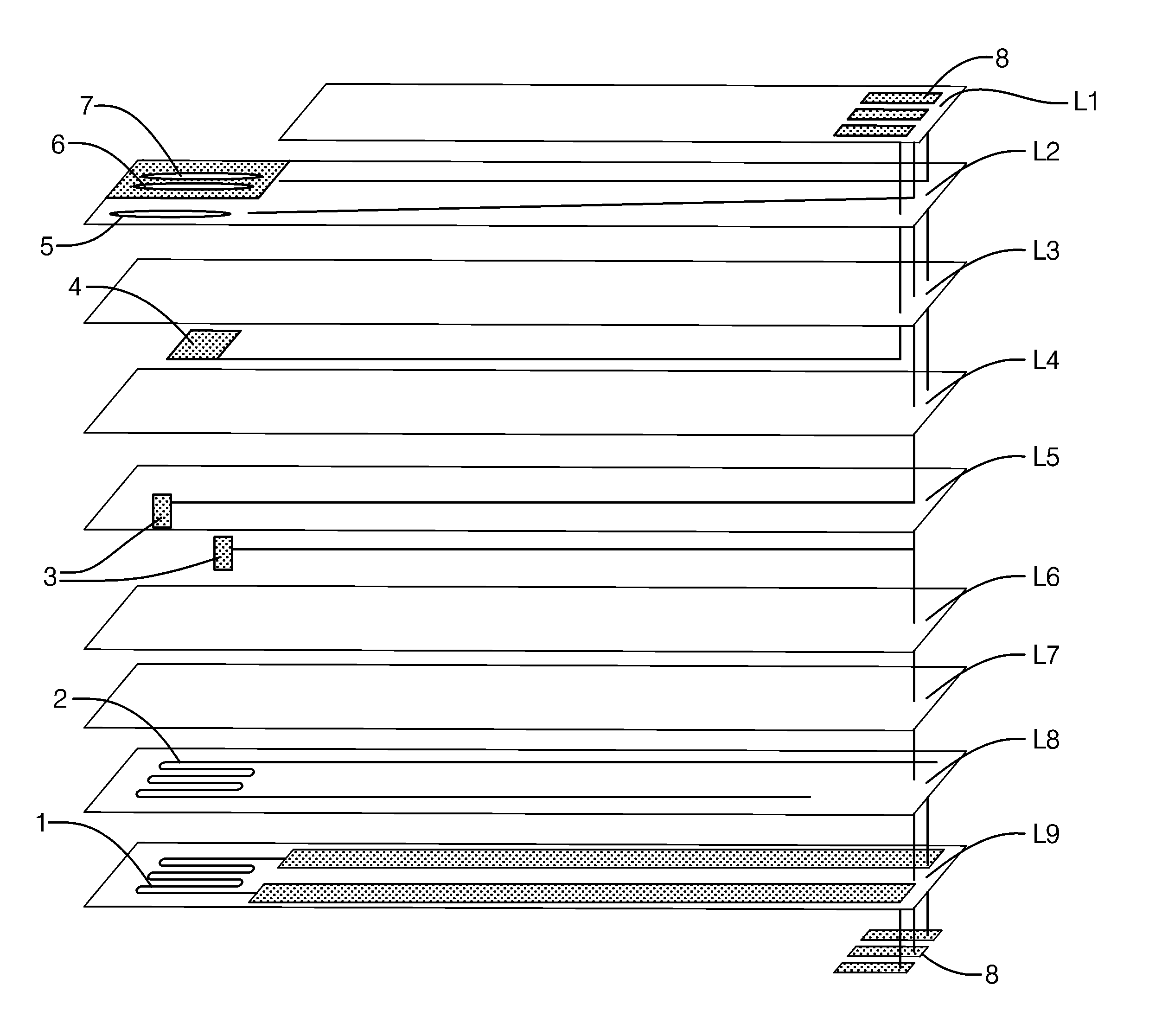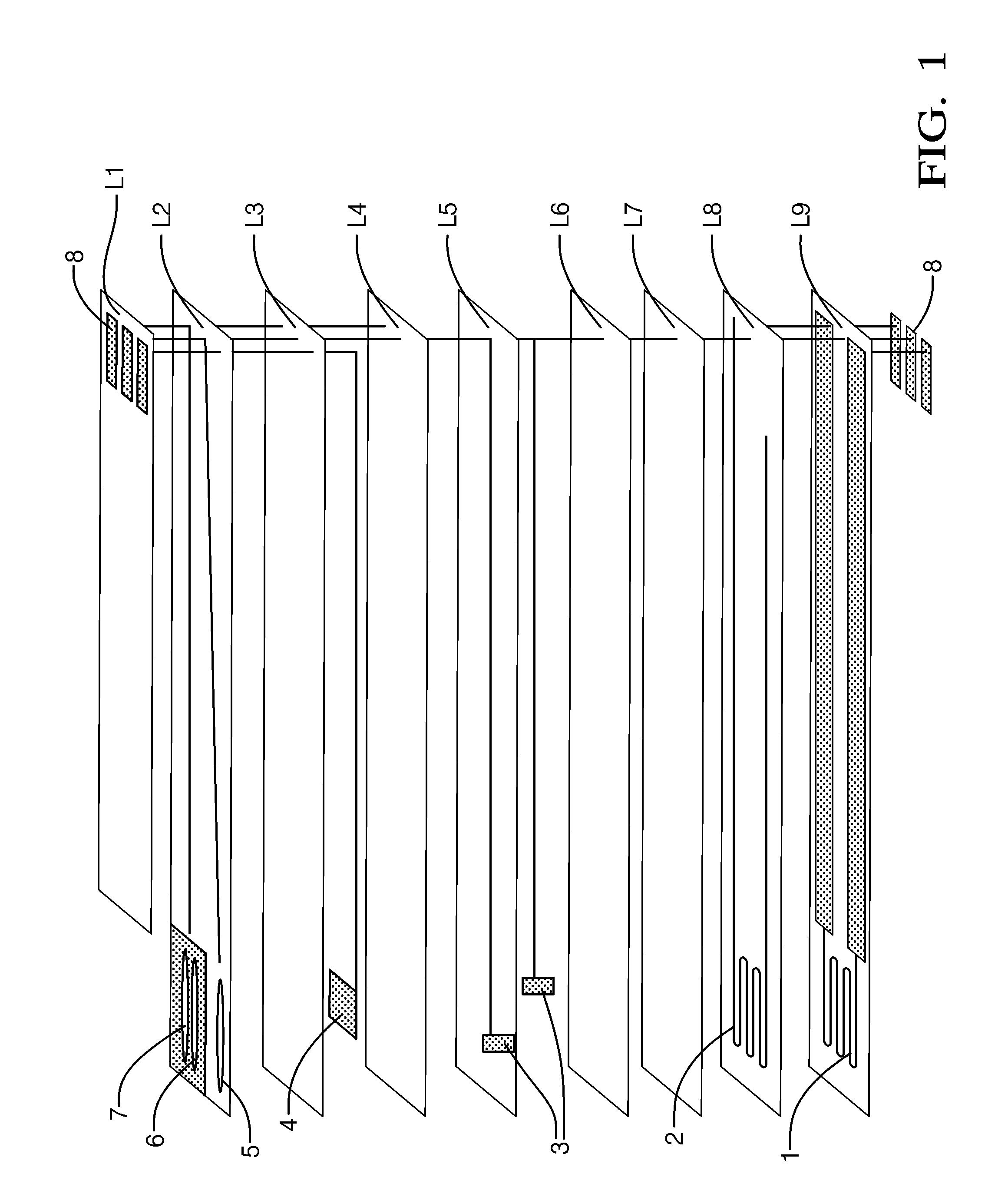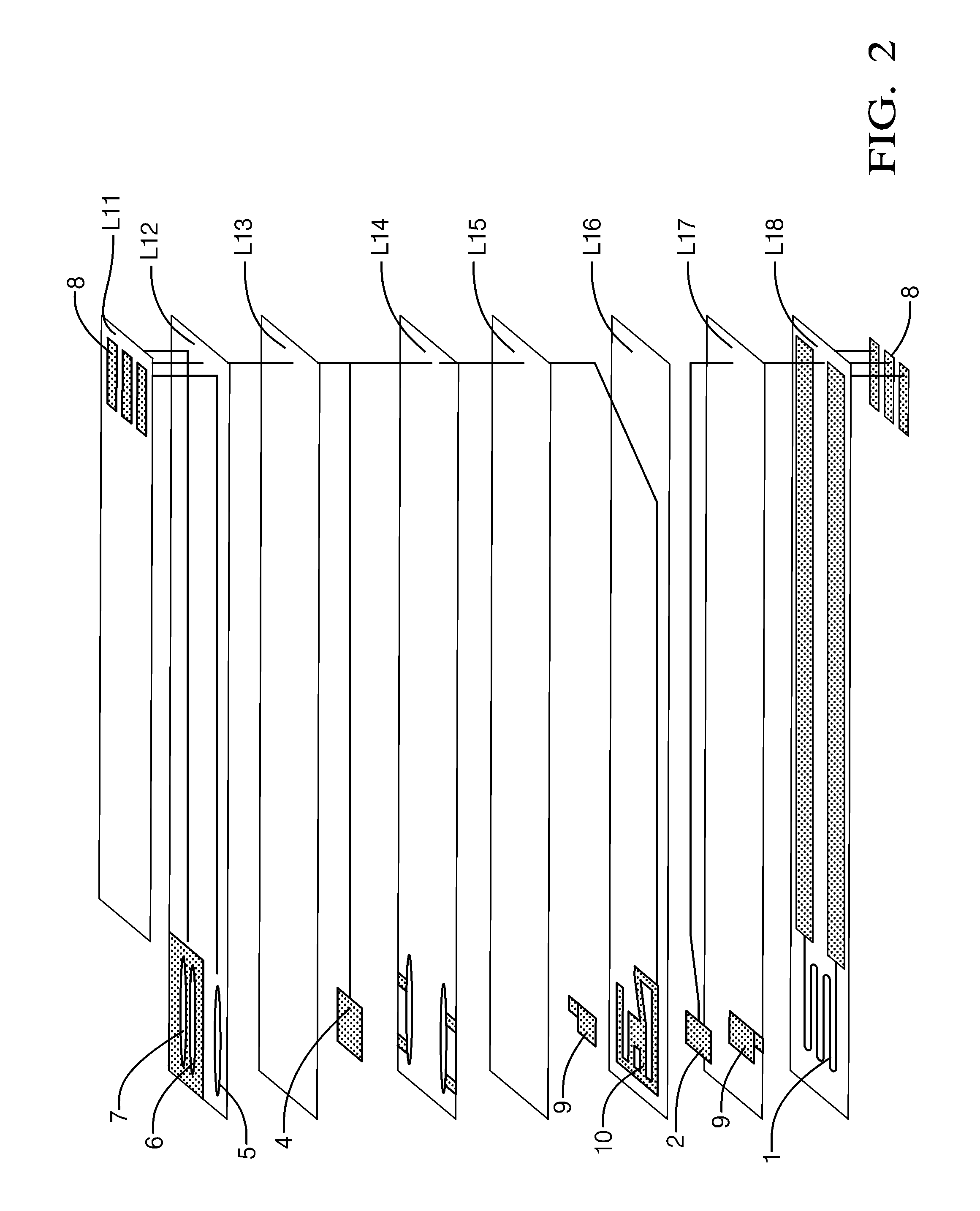Ceramic exhaust gas sensor
- Summary
- Abstract
- Description
- Claims
- Application Information
AI Technical Summary
Benefits of technology
Problems solved by technology
Method used
Image
Examples
examples
[0064]Sensor elements with the structures shown in FIGS. 14 and 2 were prepared from tape and ink raw materials. For each design, the appropriate number and thickness of tape cast alumina and zirconia tapes were blanked into sheets sized for producing seven elements in an array pattern. Via holes and electrode holes were punched into the sheet layers. The conductive circuits were applied to the sheets by screen printing platinum inks onto them. Fugitive carbon inks were printed for forming the chamber and channel features. For each design, the sheets were stacked in the correct order and orientation on a metal plate, sealed in an evacuated plastic bag, and laminated together in an isostatic laminator. Individual green ceramic elements were cut from the laminated tiles using a hot-knife. The organic binder and fugitive carbon material were burned away during a controlled temperature ramp up to a 120 minute hold at a sintering temperature of 1435° C. in a high temperature kiln. FIG. 1...
PUM
 Login to View More
Login to View More Abstract
Description
Claims
Application Information
 Login to View More
Login to View More - R&D
- Intellectual Property
- Life Sciences
- Materials
- Tech Scout
- Unparalleled Data Quality
- Higher Quality Content
- 60% Fewer Hallucinations
Browse by: Latest US Patents, China's latest patents, Technical Efficacy Thesaurus, Application Domain, Technology Topic, Popular Technical Reports.
© 2025 PatSnap. All rights reserved.Legal|Privacy policy|Modern Slavery Act Transparency Statement|Sitemap|About US| Contact US: help@patsnap.com



